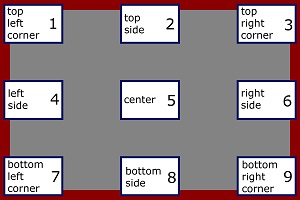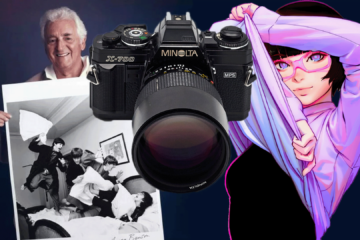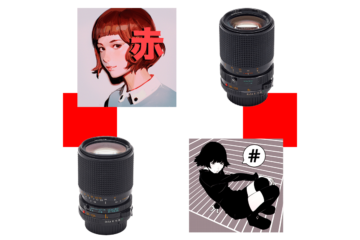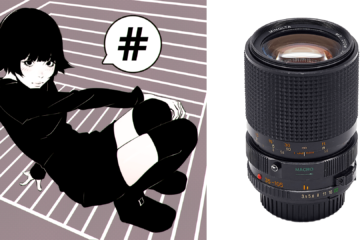Minolta MD 135mm 1:2.8 – review

Minolta MD 135mm 1:2.8 – vintage manual lens test and review
- Official classification: New-MD
- Collector’s classification: MD III
‘Must have’ lens for portraiture – very convenient in use and with the guarantee of the result. Low prices on auctions look very strange, the lens is absolutely undervalued for today. Grab it.

Minolta MD 135mm 1:2.8 (MD III, New-MD) specifications
| minolta.eazypix.de index | 186 |
| Name engraved on lens | MD |
| f[mm] | 135 |
| A max [1/f] | 2,8 |
| A min[1/f] | 22 |
| Lens design [el.] | 5 |
| Lens design [gr.] | 5 |
| Filter thread Ø front(rear)[mm] | 55 |
| Lens Shade | built-in |
| closefocus[m/ft] | 1.5/5 |
| Dimension Ø x length [mm] | 64×81 |
| Weight[g] | 385 |
| Year | 1981 |
| Style | MD III |
| Code No. (ROKKOR-X) or Order No. | 593-800 |
More data
| Floating elements | NO (full support by autofocused adapters) |
| Aperture blades number | 6 |
| Confidence in the test results of reviewed copies | Very high |
| Reviewed lens SN: | 8037989 |
- Minolta MD 135mm f2.8 optical design
- Minolta MD 135mm F2.8 optical design
In the middle of the period of production, Minolta has made a visible change in the design of this lens. I don’t know – is it enough to call it a “second version” or not but the changes are noticeable. Many thanks to LaurenSeries for pointing this out, and many thanks to Andrea Aprà for this explanation:
“It is true that the back can be “matte” or “flocking”. Unfortunately this part is hardly visible and I do not have a record of this component in my data. It is well known that “flocking” is much more efficient than simple matte covering. In the past (some of MD types) another type of painted material was used on plastic support which over time however has sometimes shown strong alterations of this paint with the appearance of white spots with a certain loss of effectiveness. As part of the initial question, I think you are wondering from which serial number they pass (we are always and only talking about MD III) from a matte structure to a “flocking” one. Unfortunately, I have no record of this possible border serial number. From what I see in the photo of Tony at the beginning, I would say that it is of the “matte” type and not “flocking”. In Ad Dieleman ‘s picture, the type is flocking (serial 8020374). Probably the change was before this serial but I don’t know where. I have estimated the production of this MD III model at around 40,000 pieces.”
Minolta MD 135mm 1:2.8 exterior
Minolta MD 135mm 1:2.8 mounted on Minolta X-700
This is a very suitable set – the camera and lens have the same design (1981 released)
Minolta MD 135mm 1:2.8 sharpness
Сlose-distance resolution test, minimal distance
Testing methods description
- Target: 10-15 cm picture, printed on glossy photo paper
- Distance:10% longer than minimal focus distance marked on the lens
- Camera: Sony A7II (24mpx, full-frame, tripod, remote control). M-mode, ISO fixed, WB fixed, SteadyShot – OFF.
- The test was repeated for every F-stop on every focus position with manual focus adjustment for each shot. That is to avoid the effect of field curvature.
- RAW processing: Capture One, default settings. All quality settings – 100%. Crops – 300×200 px
Scene preview
Test results (selected version, easy to compare – 4 positions)
Test results (full version – all 9 positions)
Long-distance resolution test
Testing methods description
- Target: cityscape
- Distance: > 200 meters to center focus point
- Camera: Sony A7II (24mpx, full-frame, tripod, remote control). M-mode, ISO fixed, WB fixed, SteadyShot – OFF. The focus point is on the center only.
- RAW processing: Capture One, default settings. All quality settings – 100%. Crops – 300×200 px
Scene preview
Test results
Minolta MD 135mm 1:2.8 aberrations
Vignetting
Geometric distortion
Coma aberrations
Chromatic aberrations
Short-distance bokeh
Test conditions: lens was focused on minimal distance 1.5m, plants are in 5m distance from the camera
Long-distance bokeh
Test conditions: the lens was focused on half distance on the scale (2.5m), buildings are on “infinity”-distance
Light bubbles bokeh
Test conditions: lens was focused on minimal distance + 10% of scale (about 1.7m), diodes were fixed in 5m distance
Minolta MD 135mm 1:2.8 (or Minolta MD 135mm F/2.8, New-MD, MD III design) – overall conclusion
It seems that all the 135mm F2.8 lenses from 1980x made by top manufacturers are the same and very good at least or outstanding very often. This Minolta isn’t an exception – it also has nice fire resistance, sharpness, and “honey” drawing. It is a nice lens for landscapes with a deep perspective and for portraits of course. This MD III reviewed version and previous one MD II have an important advantage – really lightweight for 135mm focal distance because older designs have 400+ gr. The build-in lens-shade also gives a few positive points. ‘Creamy’ bokeh works well in any conditions.
Some aberrations are presented of course, but nothing serious for so fast long lens. This is the sharpest 128mm Minolta lens, and it has a chance to be the sharpest manual 135mm 1:2.8 lens among other competitors – Minolta was able to produce such an optic. One more note – it’s a very cheap lens, absolutely underrated. So, if you don’t interested in a rare, heavy, and expensive MD 135mm F2.0 – get 135/2.8 with no doubt – this is better in all aspects, except the presence of F2 of course. The amazing portrait lens.



































7 Comments
LaurentSeries · 2020-10-31 at 22:13
Minolta seems to have produced two versions of MDIII 135/2.8, one with flocking rear end and the other with common matte black plastic, what’s the difference between? I’ve always enjoyed using these solid built handy lenses with acceptable optical quality and this one is no exception.
Tony · 2020-11-03 at 11:31
I’ve didn’t know about two versions of MDIII. Thank you, it is very interesting, will try to find more
LaurentSeries · 2021-07-05 at 10:16
Really appreciate your works and hope the good job carry on, I’d like to make a donation within my ability if you would accept.
Tony · 2021-07-05 at 12:44
I am very pleased to hear your words. Everything is OK, please, use the site for your own pleasure ))
White Vaille · 2023-09-16 at 04:31
I’m still somewhat in disbelief that I own this evidently amazing lens, for such a low price, and in almost mint condition. Mine is serial 8001819 and has flocking, so I’m guessing that the flocking was removed in later revisions as a cost-saving measure towards the end of life for the SR-mount.
Tony · 2023-09-16 at 15:22
Yeah, I think you are right – the latest copies don’t have flocking
Fettmatte · 2022-09-28 at 08:26
Minolta used glasses for the rear lens that got problems over time. it’s hard to find an intact md2 or md3 at all. Pay attention to the rear lens when buying.